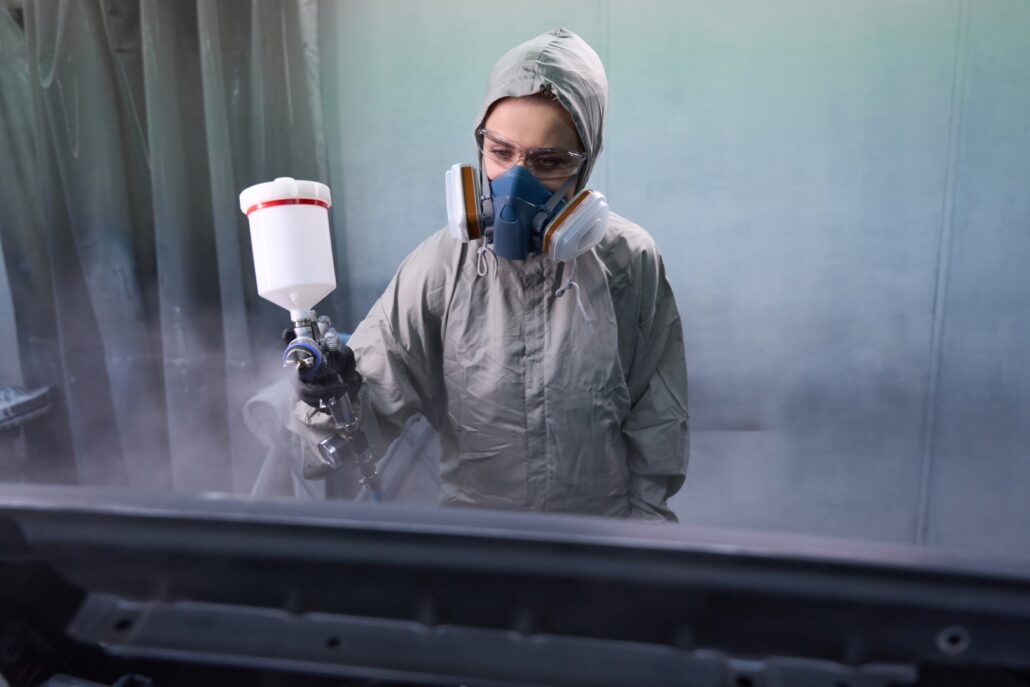When restoring a classic car, every detail matters. Your engine brackets, suspension arms, trim pieces, and other metal parts deserve more than a quick spray-paint job. Instead, the combination of sandblasting and powder coating offers a durable, high-quality finish that preserves both aesthetics and structural integrity. In this article, we’ll walk through the process, advantages, cautions, and best practices — from the viewpoint of a specialty coater like Macs Coatings.
Why Choose Sandblasting Before Powder Coating
Before applying any protective finish, you need a clean, bare metal substrate. Over decades, classic car parts often accumulate rust, old paint, primer layers, grease, and oxidation. Simply cleaning or chemical stripping often leaves residue or microscopic pits. Sandblasting effectively and evenly removes these layers and exposes the raw metal surface.
By contrast to traditional painting methods, powder coating delivers a stronger, more durable finish that resists chipping, peeling, and corrosion. Macs Coatings promotes powder coating as “a look that will last” and offers this service for rims, custom projects, and car components.
When combined, sandblasting followed by powder coating produces a restoration result that looks factory-fresh and performs under decades of stress.
The Sandblasting Step: Media, Pressure, and Control
Not all sandblasting is equal. In classic car restoration, the choice of media, pressure, and technique can make or break a part.
Choosing the Right Abrasive Media
Silica sand is traditional but carries health risks and is often avoided in professional shops. Instead, gentler media such as glass bead, aluminum oxide, or steel shot are common. The right media cleans the surface without over-etching thin metal or warping delicate panels.
Controlling Pressure and Distance
Too much pressure or holding the nozzle too close can distort or pit metal, especially on thinner fenders or sheet metal. Experienced operators know to vary distance, angle, and pass speed, applying just enough energy to strip coatings without damaging the substrate.
Risks and Precautions
Some purists debate whether sandblasting is safe for older body panels. While sandblasting heavier parts (like frames or brackets) is generally safe, thinner panels may warp under excessive heat or aggressive technique.
At Macs Coatings, we emphasize that an experienced blasting operator is essential. By moderating pressure, choosing appropriate media, and controlling movement, we avoid issues. Moreover, we back our work with a full one-year warranty.
Post-Blast Preparation: Inspection and Touch-Up
After blasting, parts should be immediately inspected. Any remaining pits, weld seams, or flaws become visible once paint is removed. At this stage you can:
- Perform final metal work or welding
- Grind or fill small imperfections
- Clean the part with solvents or compressed air
- Mask off areas not to be coated
Prompt cleaning is vital since bare metal can flash rust quickly. Many specialty coaters, including Macs Coatings, offer both blasting and immediate transfer into their powder coating booths.
Powder Coating: How It Works and Why It’s Superior
Unlike wet spray paint that uses solvents, powder coating uses finely ground polymer powder electrostatically applied to the grounded metal part. The part is then baked in an oven, causing the powder to melt and flow into a uniform, durable finish.
Because the coating fuses to the substrate, the result is tougher, more chip-resistant, and more corrosion-resistant than conventional paint. Macs Coatings highlights that their powder coating service yields better longevity than standard paint.
They powder coat a variety of items including car rims and custom projects.
Key Steps in Powder Coating Classic Car Parts
- Mounting / Fixturing
Parts are hung or fixtured so that all surfaces are exposed to the electrostatic spray and oven heat. - Electrostatic Application
The powder is sprayed while imparted with charge; it “jumps” to the grounded part for uniform coverage, even in recesses. - Curing in Oven
The baked part cures into a hard polymer shell. Each powder type has its temperature/time profile. - Cooling and Inspection
Parts are cooled, visually inspected, and packaged to prevent damage.
Throughout, the quality of adhesion, thickness uniformity, and finish depend on process consistency.
Benefits for Classic Car Restorers
- Durability: Resistant to chips, abrasion, and chemicals
- Corrosion Protection: Powder coatings form a dense barrier against moisture and salts
- Color Stability and Options: A wide palette of powder colors allows you to match vintage shades or modern custom tones
- Low Maintenance: Once coated, parts require little upkeep
- Eco-Friendlier: No solvents or volatile organic compounds (VOCs) are released
As a locally and family-owned business, Macs Coatings promotes fair pricing, customization, and a one-year warranty on all services.
Common Challenges and How to Avoid Them
- Thin Panels Warping: Avoid blasting too aggressively; monitor heat buildup
- Adhesion Failure: Cleanliness, proper grounding, and correct curing are critical
- Overspray in Tight Recesses: Proper fixturing and masking help
- Flash Rusting Between Blasting and Coating: Minimize delay; use rust inhibitors if needed
- Mismatched Color or Texture: Work with the coater to select equivalent powders or finishes
A professional coater like Macs Coatings has the experience and equipment to navigate these pitfalls.
Bringing It All Together at Macs Coatings
When you work with Macs Coatings for your classic car parts, you benefit from:
- A seasoned staff skilled in blasting and powder processes
- Free estimates and custom requests handled personally
- Competitive pricing in their market
- A one-year warranty on all powder coating and blasting services
Whether you bring in engine mounts, trim brackets, wheels, or chassis components, their full resurfacing services restore parts to show quality.
Timeless Finishes That Last
Restoring classic car parts is a combination of precision technique and high-quality coatings. By starting with clean bare metal through sandblasting, then applying powder coating, you achieve a durable, beautiful finish that honors the integrity of your vintage ride.
If you’re ready to trust your restoration to a specialist, contact Macs Coatings today for a free estimate and see how their family-owned shop can bring your parts back to life.

